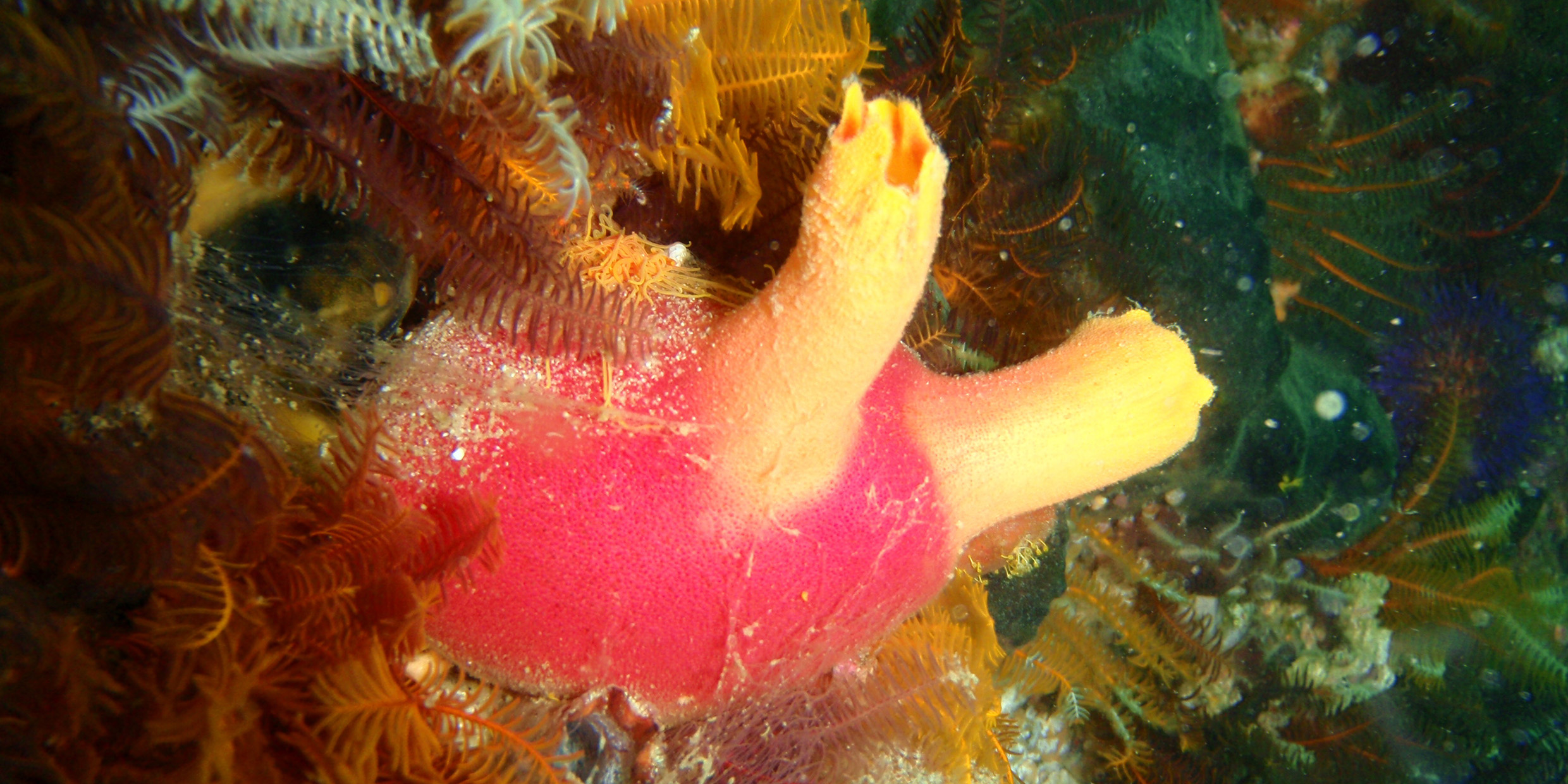Originally published 21 July 1986
I have a friend, a marine biologist, who haunts the beaches, salt-water marshes, and tide pools of the New England shore collecting the gifts of the sea. Now and then she will find something special that she shares with me. This past weekend she presented me with one of the biggest and finest sea squirts she had ever found washed ashore.
Sea squirts are animals that live attached to the sea floor or underwater objects. They like cold water and are not uncommon along the New England shore. Externally, their bodies are not much more than little sacks. They have two protruding orifices, or siphons — an in-pipe and an out-pipe — and if you poke a live sea squirt its muscles will contract and it will expel water through both orifices; hence, its name.
Varieties of sea squirts usually take their name from their shape or color — sea vases, sea grapes, sea peaches, and so on. The one my friend found was a stalked sea squirt, or sea potato. You would think you were looking at a kind of seaweed — there is nothing to see but a soft leathery pouch on a stem. But the sea squirts are members of the phylum Chordata, my biologist friend informed me. And there hangs a story.
The chordates are the branch of the animal kingdom that includes the vertebrates, the creatures with a backbone — the cats, the dogs, the fishes, the frogs and, of course, ourselves. So it turns out that the sea squirt is more closely related to us than almost anything else that might wash up on the shore.
Inspired by this revelation, I got out my copy of Five Kingdoms: An Illustrated Guide to the Phyla of Life on Earth by Lynn Margulis and Karlene Schwartz. This is a wonderful book, a handsome book to hold in the hand, an intellectually stimulating book to peruse, and the best overview I’ve ever seen of life on Earth. Of the 300 pages in the book, the chordates are allowed five pages, the mammals two paragraphs, the primates a line, and Homo a word. A glance at the book every now and then helps keep things in perspective.
Curious company
And sure enough, Margulis and Schwarz have chosen to illustrate three chordates with a photograph: a salamander, a swan, and a sea squirt. How, I asked myself, does that little sack on stem, that spineless pouch, merit the company of salamanders and swans?
Chordates are defined by the presence of three features. One is the nerve chord in the back, which in mammals becomes the brain and spinal chord. The second is a rod of cartilage, called the notochord, which forms at the back of the primitive gut in the early embryo. In the vertebrates the notochord is replaced by the backbone in the course of development. The third chordate feature is the presence at some stage in the life cycle of gill slits in the pharynx or throat. The gill slits are evidence that chordates came from the sea. All of these features you and I share with the sea squirt.
Adult sea squirts seem to have little in common with salamanders, swans, or humans, but in the larva stage the resemblances are striking. In fact, the larval sea squirt looks remarkably like the tadpole of a frog. There are even rudimentary eyes, ears, and a brain, all of which the sea squirt loses after a brief period as a free-swimming animal. It was these larval characteristics which led the 19th century naturalist Kowalevsky to conclude that sea squirts belong to the same branch of the animal kingdom as we do. That discovery, which came only a few years after the publication of Darwin’s Origin of Species, was instrumental in bringing about acceptance of the theory of evolution.
Evolution in reverse
So what happened? The sea squirt in my friend’s collecting bucket certainly didn’t look like a fellow chordate. Inside the leathery pouch there is a mouth, a pharynx, an esophagus, a stomach, a liver, and an intestine. There is a heart and a single nerve ganglion where there might have been a brain. There are ovaries and testes. But there is no backbone, no brain, no skull.
Some biologists believe that creatures similar to larval sea squirts were the earliest chordates, the ancestors of us all. If so, then the evolution of the sea squirt is an example of evolution going backwards — regressing instead of progressing. And the metamorphosis of the larval sea squirt into an adult recapitulates that downhill slide.
After a brief youthful fling during which it enjoys the freedom and anatomical sophistication of the tadpole, the sea squirt settles down, attaches itself to some solid surface, and simplifies. It forgoes a backbone, it forgoes sense organs, it forgoes a brain. But it doesn’t fool anyone. In spite of its retrogressive tendencies and primitive appearance, the sea squirt is of the same stock as the highest forms of life on earth.



